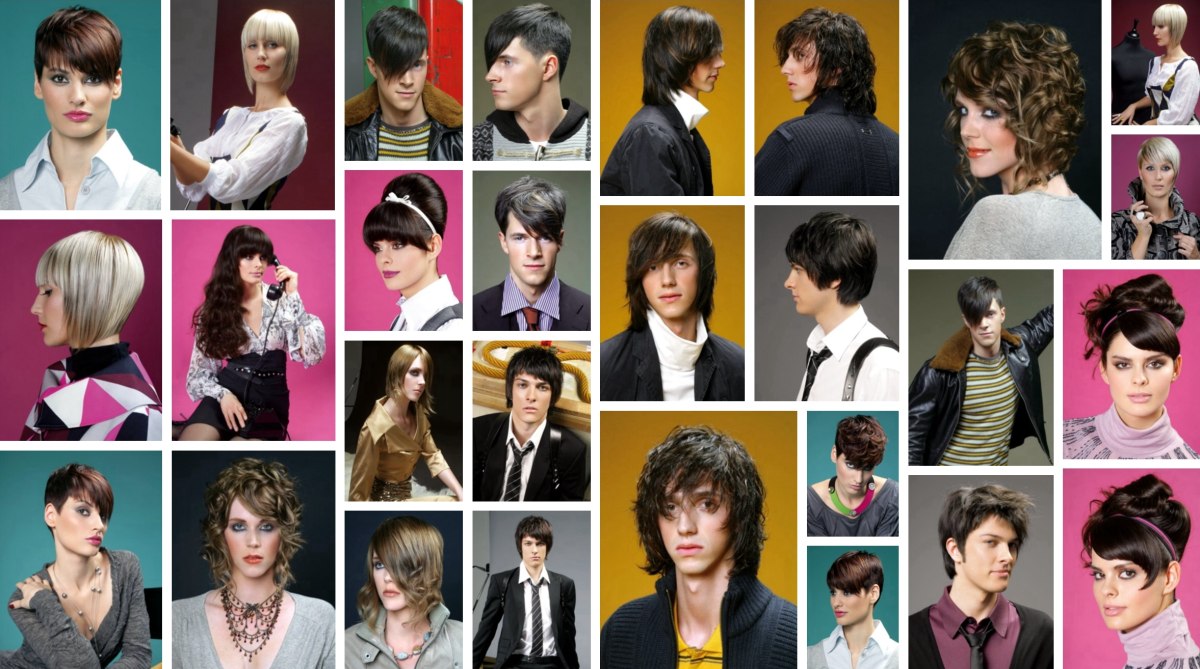Introduction to Eighties Hair Fashion
The 1980s brought big, bold changes to hair fashion, where people loved huge, curly, and creative hairstyles to show their unique style. Both men and women tried new looks with lots of volume and texture. TV shows and magazines spread these exciting styles, making them a big part of the decade’s culture.
In the 1980s, hair was more than just looking good; it showed confidence, power, or rebellion. Some people thought long hair made them feel strong and important, especially at work, whereas some thought wild, spiky styles stood out in society and broke the rules.
Whether someone was a rock star, an athlete, or just a regular person, their hairstyle helped them fit in with their group or show who they were.
Eighties Women’s Hair Fashion
Voluminous Hairstyles for Women in the 1980s
Teased Big Hair

Image Source: https://in.pinterest.com/daysmartsalon/
Teased big hair became a defining symbol of women’s style in the eighties. Stylists used backcombing, mousse, and hairspray to create maximum height. This look required significant maintenance to hold volume. According to Britannica, the decade emphasized boldness, and hair volume reflected this cultural shift.
Permed Volume Waves

Image Source: https://stylewithglam.com/
Permed volume waves gave women lasting curls and dense texture. Chemical treatments created long-lasting waves that expanded overall hair volume. Women often paired permed waves with layered cuts for added movement. Encyclopedia of Hair (Greenwood Press, 2005) confirms perms were among the most widespread treatments in the 1980s.
Crimped Texture Styles
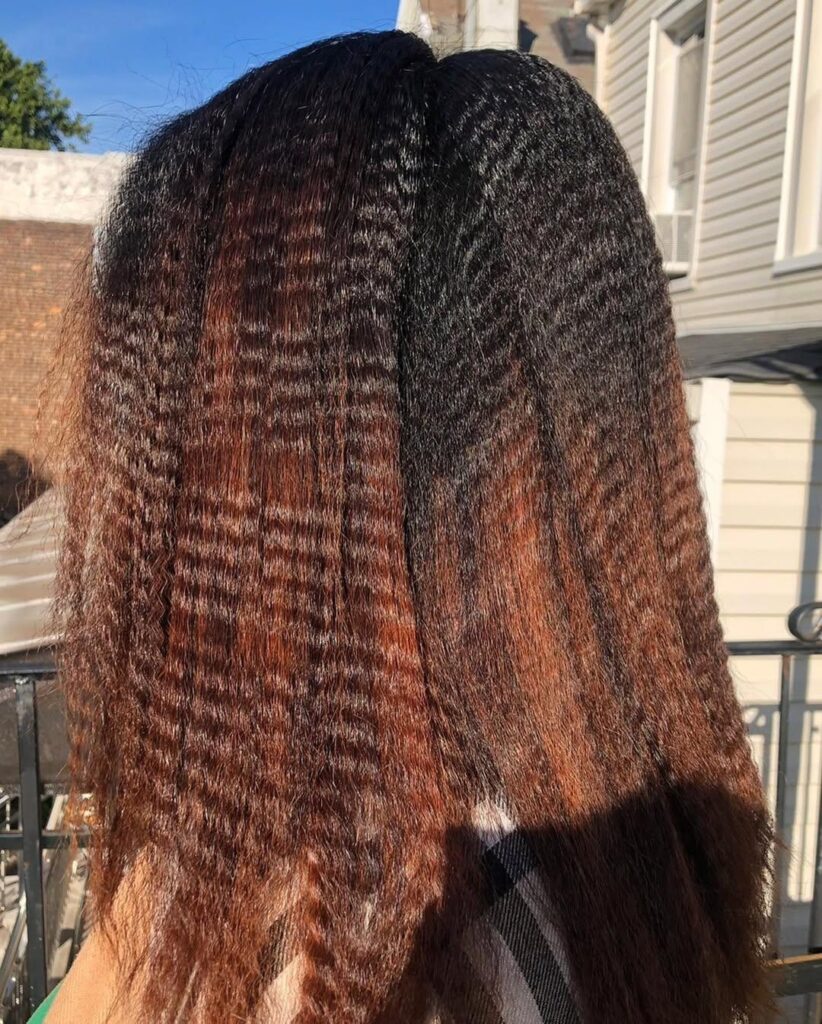
Image Source: https://www.instagram.com/p/CCgUWd1HzMC/
Crimped hair emphasized the sharp, zigzag-like texture created with heated styling irons. This style provided a playful and experimental look common in youth fashion. Crimping worked on both short and long hair lengths. Fashion magazines frequently promoted it as a trendy alternative to perms. Vogue Archives show crimping as a staple in late-1980s runway and editorial shoots.
High-Sprayed Updos

Image Source: https://therighthairstyles.com/
High-sprayed updos offered women extravagant structure for formal settings. Stylists secured hair into lifted designs with strong hairspray. These updos often contained curls or teased sections for extra height. The style symbolized elegance but with the bold scale typical of the decade. Britannica highlights that hairspray demand peaked in the 1980s due to such looks.
Curly Hairstyles for Women in the 80s
Tight Perm Curls
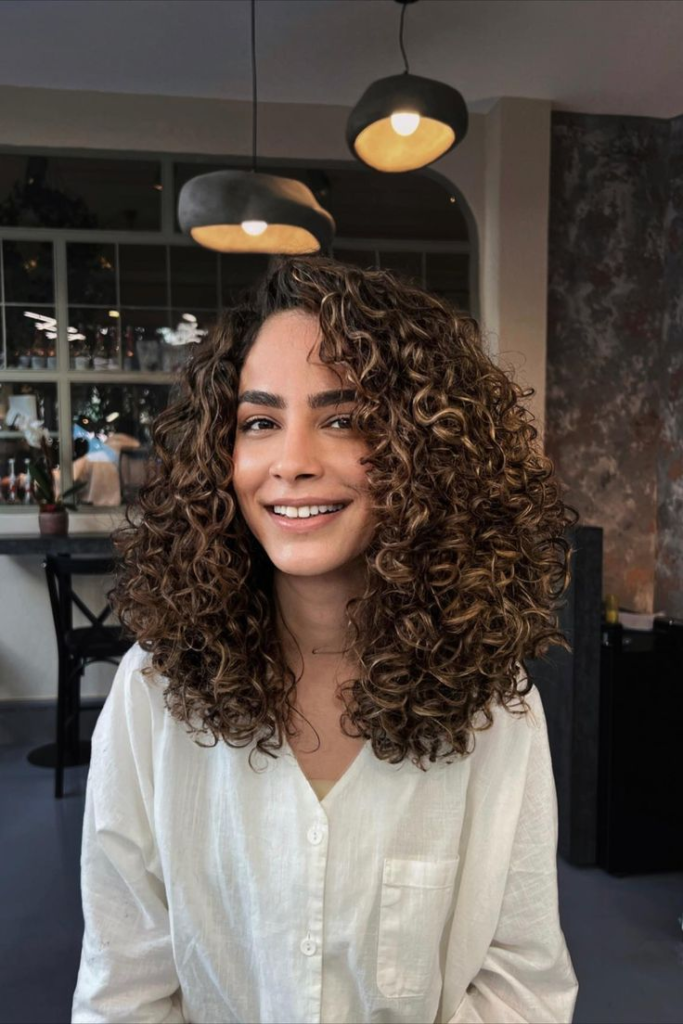
Image Source: https://in.pinterest.com/thefab20s/
Tight perm curls provided women with a dense, controlled hairstyle. Chemical perms produced ringlets that lasted for months. This hairstyle was high-maintenance but very popular across various groups. The Encyclopedia of Hair records perms as one of the most significant cosmetic processes of the decade.
Loose Glamour Curls
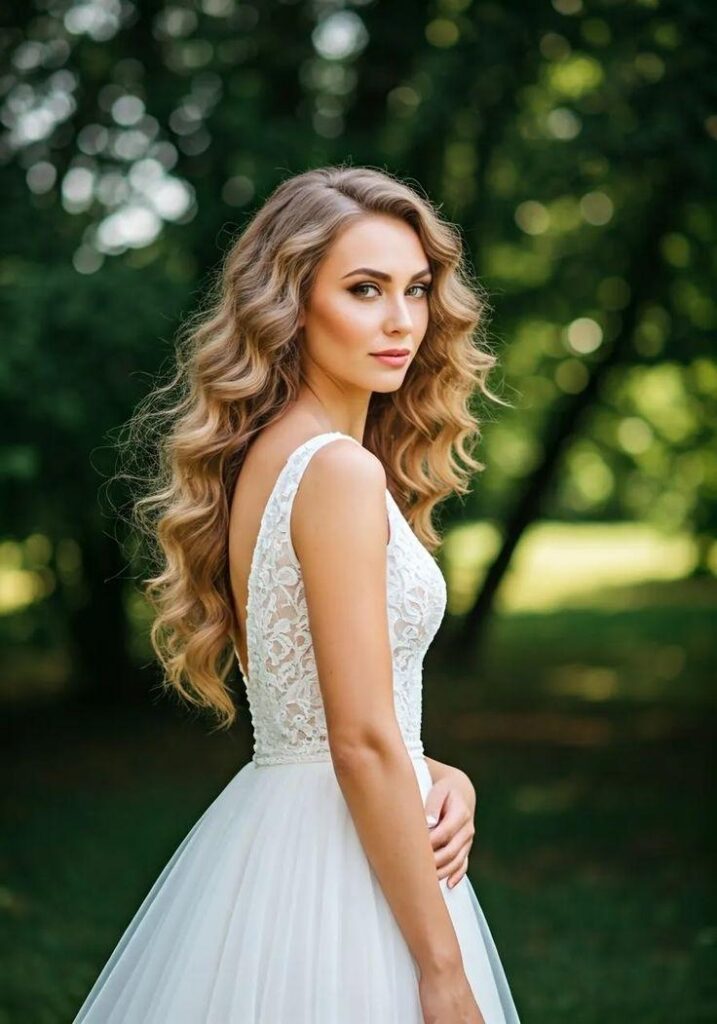
Source: https://pin.it/2GB8ek9Bu
Loose glamour curls defined softness and volume. Stylists achieved this look with large rollers or curling irons, and it often appeared in red-carpet events and fashion spreads. Vogue noted that elegant curls represented luxury and femininity in the 1980s.
Side-Swept Curly Styles

Image Source: https://www.beautycon.com/
Side-swept curls gave structure to thick curly hair. A deep side part created an uneven look, while curls added movement. This hairstyle was suitable for both casual and formal settings. It reinforced the emphasis on bold shapes in women’s fashion.
Curly Layered Bob

Image Source: https://in.pinterest.com/77markat/
The curly layered bob blended short cuts with 1980s volume, and the layers boosted curl definition and minimized bulk. This hairstyle offered simplicity while staying fashionable. According to Britannica, layered cuts were essential for maintaining balance in long hairstyles.
Feathered Hair for Women in the Eighties
Classic Farrah Fawcett Style
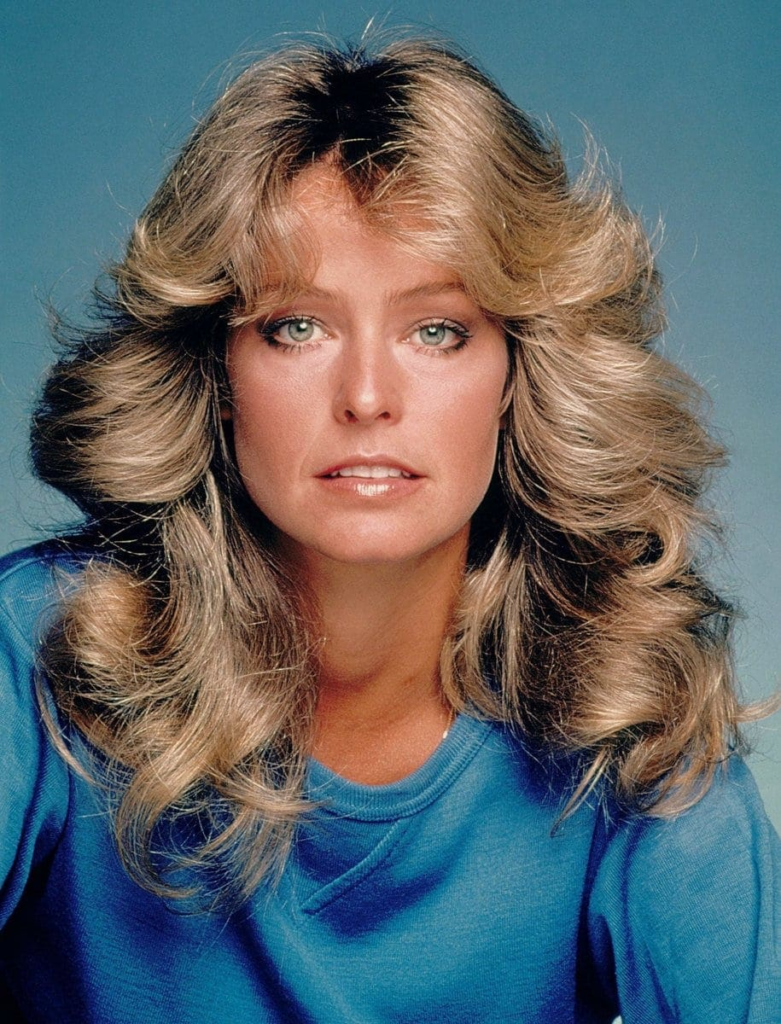
Image Source: https://clickamericana.com/
Farrah Fawcett’s feathered hair continued to influence women in the 1980s. Layers were blow-dried outside to form wing-like shapes, and the look emphasized softness and movement. Smithsonian Magazine identifies Fawcett’s style as one of the most popular hairstyles of the 20th century.
Layered Feathered Bob
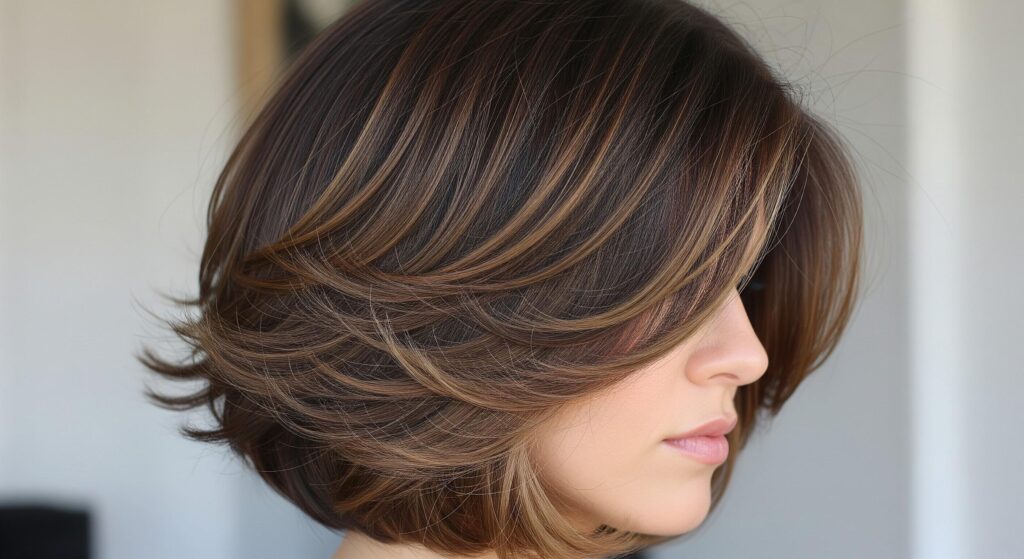
Image Source: AI
The layered feathered bob provided a shorter modification of the feathered trend. Stylists cut hair to chin or shoulder length with multiple layers. Blow-drying enhanced the outward feathering effect. It became a practical option for women balancing work and fashion.
Feathered Bangs with Waves

Image Source: https://pin.it/27lCKTMKj
Feathered bangs with waves framed the face with softness. Stylists layered bangs and curled them outward for texture; combined with wavy lengths, the look blended casual and glamorous appeal. This hairstyle was often photographed in fashion and beauty magazines.
Shoulder-Length Feathered Cut

Image Source: https://www.vintag.es/
The shoulder-length feathered cut offered balance between long and short styles. Layers created volume, while outward feathering defined shape. It was versatile, working across formal and casual settings. The Encyclopedia of Hair confirms shoulder-length feathering remained one of the most enduring 1980s styles.
Punk, Bob, Neon-Dyed, Mohawk, and More: Women’s Hair in the 1980s
Spiked Punk Hair

Image Source: https://pin.it/51XzcetsQ
Spiked punk hair symbolized rebellion and counterculture. Stylists used gel and hairspray to create sharp vertical spikes. Colors often ranged from black to neon. According to the Rock and Roll Hall of Fame, punk hairstyles expressed identity as much as music did.
Asymmetrical Bob Cut

Image Source: https://br.pinterest.com/instyle/
The asymmetrical bob gave women a sharp, modernist silhouette. One side was cut shorter than the other, creating imbalance. This style reflected avant-garde fashion seen in 1980s clubs. Vogue Archives show the asymmetrical bob linked to post-punk and new wave aesthetics.
Bright Neon-Dyed Styles
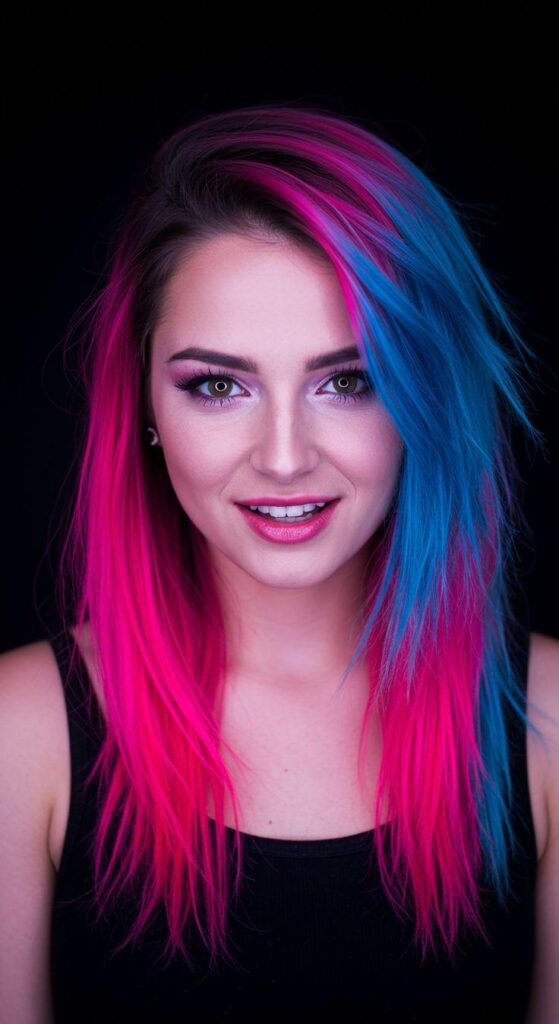
Image Source: https://pin.it/4dnngGWIZ
Neon-dyed hairstyles reflected bold experimentation in youth subcultures. Bright colors like pink, blue, and green became visible on runways and streets. Dyes required frequent upkeep to maintain vibrancy. Smithsonian Magazine notes neon dyes as part of broader 1980s color trends in fashion.
Mohawk-Inspired Women’s Hair
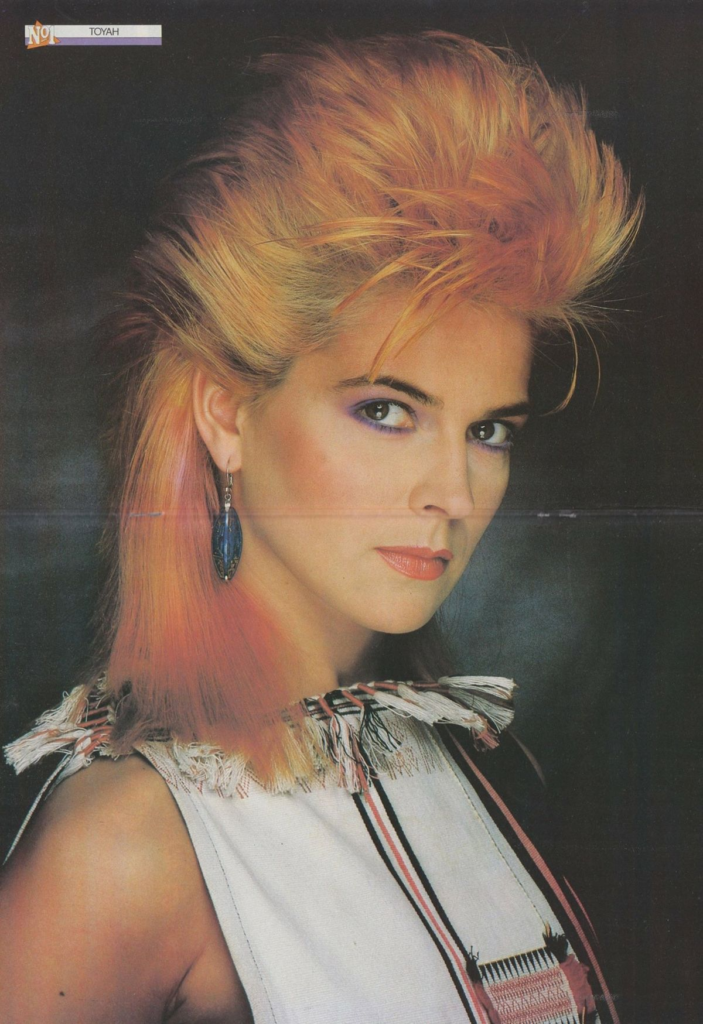
Image Source: https://in.pinterest.com/tyheegar/
Mohawk-inspired cuts appeared in both punk and mainstream adaptations. Some women shaved the sides entirely, while others styled faux versions. The central strip was often spiked or dyed. According to Britannica, the Mohawk haircut originated earlier but gained mass recognition in 1980s punk culture.
Power Hairstyles for Women in the 1980s
Structured Bouffant Styles

Bouffant-inspired hairstyles reappeared on a larger scale in the 1980s. Teasing and hairspray produced maximum lift at the crown. These styles often represented authority in workplace fashion. Britannica highlights bouffant revivals as markers of social status and power.
Slicked-Back Corporate Hair
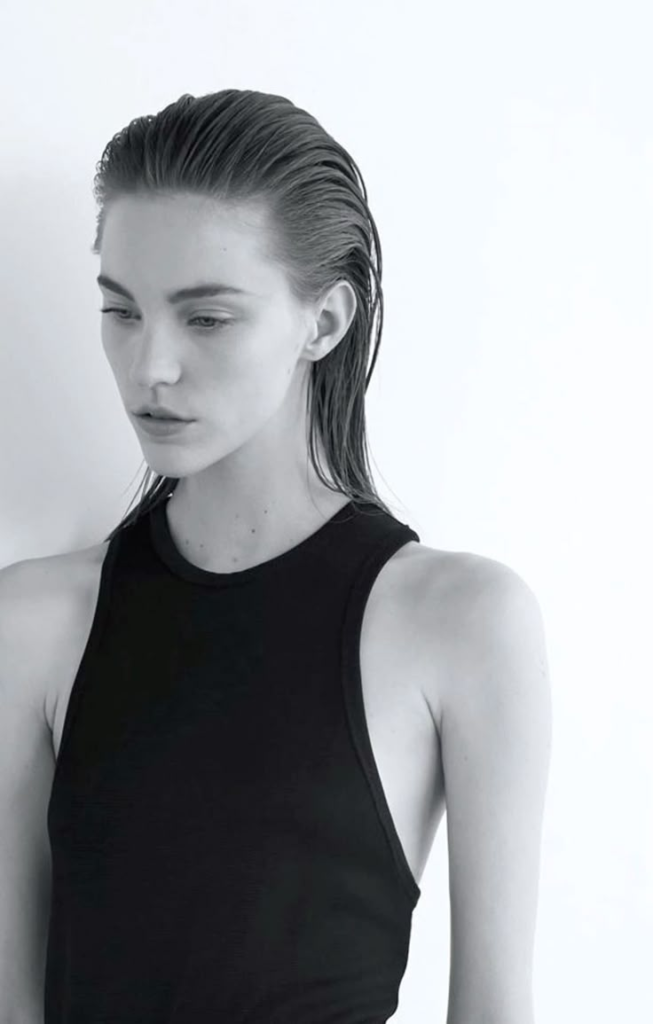
Image Source: https://ar.pinterest.com/narimandc/
Slicked-back hair displayed authority and professionalism, where Women combed hair back firmly with gel or mousse. This minimalist look contrasted with the decade’s larger hairstyles, which often appeared in business and political contexts.
Layered Power Bob

Image Source: https://in.pinterest.com/keelywelton/
The power bob became a symbol of professional identity for women. Short, layered cuts framed the face with exactness. Blow-drying highlighted structure and control. Encyclopedia of Hair identifies the bob as one of the most versatile styles in modern fashion.
Accessorized Power Looks (Headbands, Clips, Scrunchies)

Image Source: https://www.wonderwall.com/
Accessories enhanced women’s hairstyles throughout the 1980s. Headbands, scrunchies, and clips added color and variety. These items reinforced volume-focused styles or controlled larger shapes. Smithsonian Magazine records scrunchies as a defining accessory of 1980s hair culture.
Eighties Hair Fashion for Men’s
Men in the 1980s had tons of hairstyle options. Some grew their hair long to look free and wild, while others kept it short for a clean and professional vibe. These styles matched their personalities and the music, movies, or sports they loved.
Long Hairstyles for Men in the 1980s
Glam Rock Blowout

Image Source: https://kr.pinterest.com/emilybexromance/
The glam rock blowout defined excess and volume in men’s hair during the 1980s. Stylists make this look with backcombing, mousse, and heavy hairspray with Height and dramatic lift gave the style its signature appearance. Bands such as Mötley Crüe and Bon Jovi showcased it on stage, influencing millions of fans worldwide. According to Twentieth-Century American Fashion (Berg, 2005), the glam blowout symbolized the fusion of music culture and hair fashion.
Flowing Metal Mane

Image Source: https://mendeserve.com/
The flowing mane was popular among heavy metal musicians and fans, where Long, loose strands displayed freedom and rebellion, in which hair often appeared natural, with minimal styling apart from shampoo and brushing. The look connected with the raw, untamed identity of rock culture; it contrasted sharply with the polished, conservative grooming of professional men in the 1980s. Live performances and MTV videos reinforced this hairstyle as a symbol of uniqueness and independence.
Layered Mullet

Image Source: https://mendeserve.com/
The mullet became one of the most recognizable men’s cuts of the decade, where hair remained short at the front and sides but long in the back; this layered approach balanced structure with rebellion. Its popularity spread from rock stars to athletes and everyday men. According to the Oxford English Dictionary, the mullet remains a lasting cultural reference point for 1980s fashion. Its adaptability made it appealing across both residential and working-class communities.
Beach Wave Surfer Look
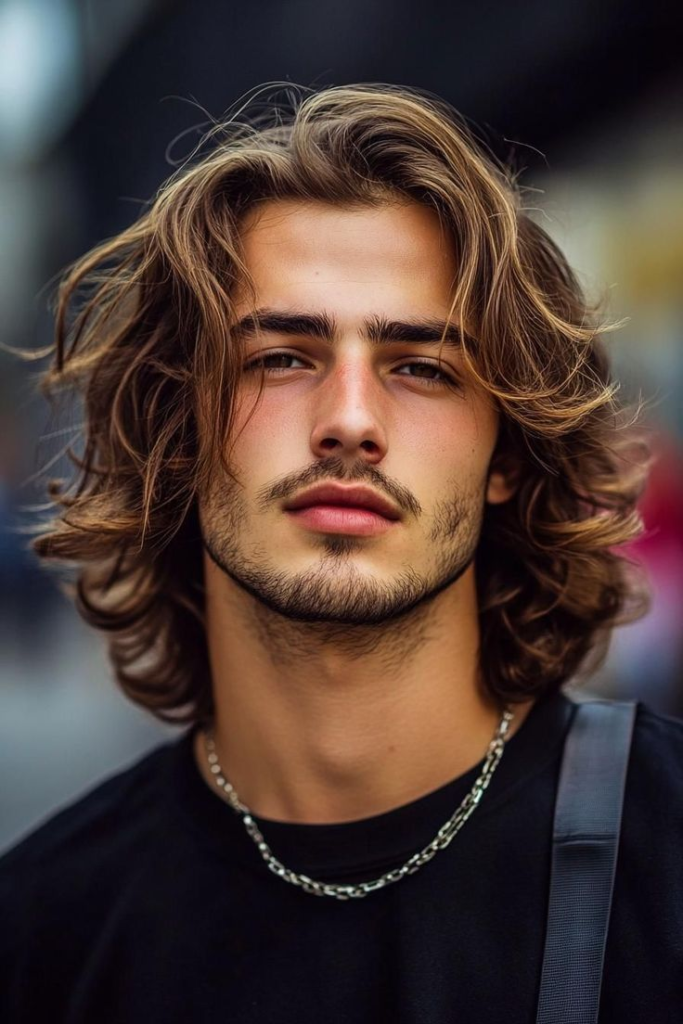
Image Source: https://kr.pinterest.com/joshua563v/
The surfer look reflected California’s relaxed, coastal lifestyle. Sun-bleached highlights and loose waves defined the style. Light gels or natural sea salt water enhanced texture and movement. The hair projected an effortless and casual identity, often paired with outdoor fashion. Magazines and television helped spread the surfer aesthetic beyond the West Coast. By the mid-1980s, the style symbolized youthful freedom and was especially common among younger men.
Feathered Fringe

Image Source: fity.club
Feathered hair continued its popularity from the late 1970s into the 1980s. Stylists layered and brushed hair back from the face, creating soft, wing-like curls, where blow-dryers and round brushes shaped the look, which suited both long and medium cuts. Male actors and models wore feathered ends, taking the style from Farrah Fawcett’s iconic layered hair [Britannica, Fashion History]. It shows a sleek yet relaxed image, often associated with mainstream fashion rather than underground culture.
Short Haircuts for Men in the 1980s
Textured Quiff
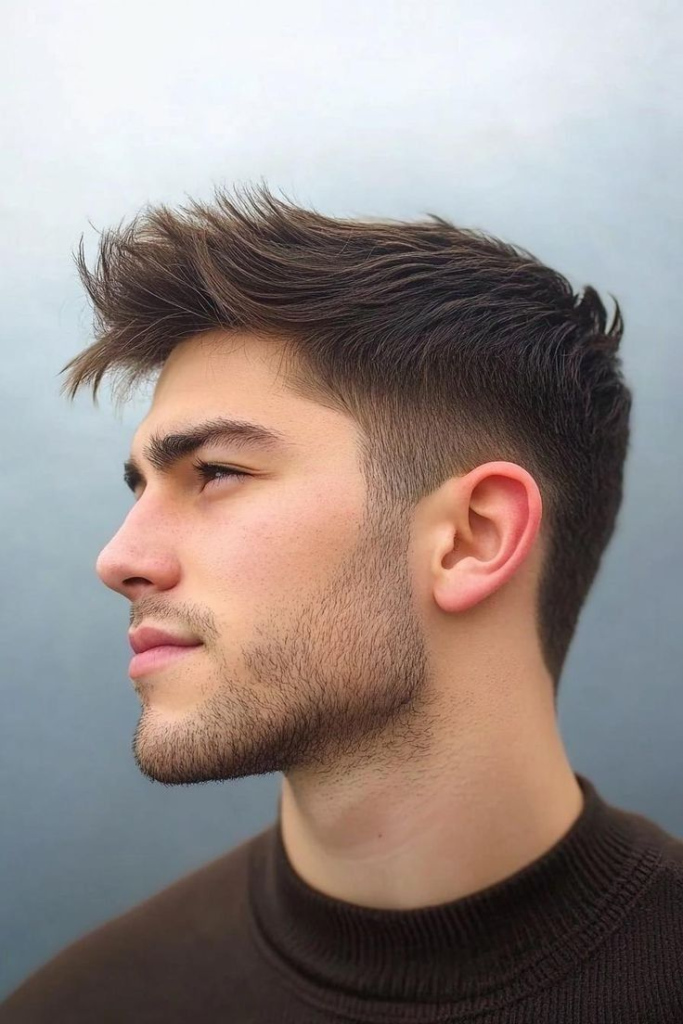
The textured quiff combined structure with volume, offering a sharp yet all-round look. Hair was brushed upward and back, often with mousse or gel. Barbers trimmed the sides neatly, emphasizing the contrast at the crown. According to Britannica, the quiff has roots in earlier decades but resurged in the 1980s with modern styling products. Its popularity came from its balance between casual and professional settings.
Slick Side Part

Image Source: vagazine.com
The slick side part projected neatness and control in men’s grooming. Stylists created the look by combing damp hair flat with pomade or gel. The strong side parting divided the hair into a defined structure. This haircut was particularly common in formal or professional contexts. As noted by Encyclopedia of Hair (Greenwood Press, 2005), the side part represents one of the longest-lasting men’s hairstyles across the twentieth century.
Pompadour

Image Source: mexalex.com
The pompadour returned in the 1980s with greater volume and shine. Hair was lifted at the front and combed back, secured with mousse and hairspray. The style required regular maintenance to hold height throughout the day. Musicians and fashion icons helped reintroduce the look to younger men. The Britannica Reference on hair and fashion confirms the pompadour’s repeated revivals across decades, each time reflecting cultural ideals of masculinity and flair.
Crew Cut Revival
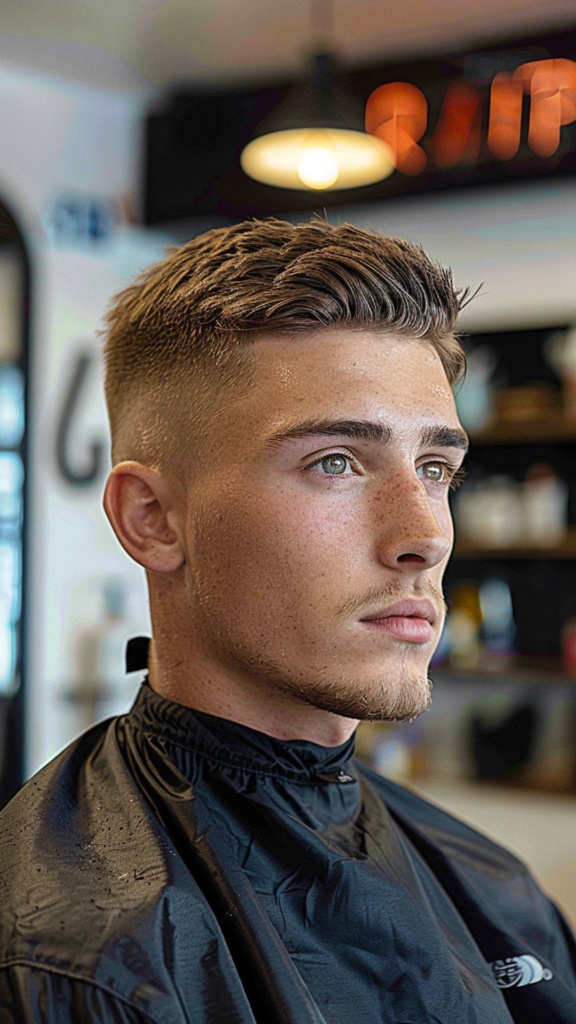
Image Source: love-yarn.com
The crew cut resurfaced in the 1980s as a symbol of athleticism. Barbers clipped the sides very short and left minimal length on top. Its military origins gave it a disciplined and functional image. The style contrasted strongly with voluminous 1980s hair trends. According to Britannica, the crew cut originated in U.S. Ivy League schools before spreading into broader culture. Its reappearance in the 1980s reinforced values of simplicity and practicality.
Flat Top

Image Source: ca.pinterest.com/paulsmithe
The flat top became a symbol of accurate cutting during the late 1980s. Hair was cut upright and shaped into a level surface at the head. Stylists often paired it with closely shaved sides for improved definition, and this haircut required frequent trimming to maintain orderly accuracy. Smithsonian Magazine notes that the flattop was strongly connected to hip-hop and sports culture, making it both a fashion and cultural statement.
Curly Hairstyles for Men in the 1980s
Shaggy Curly Mullet
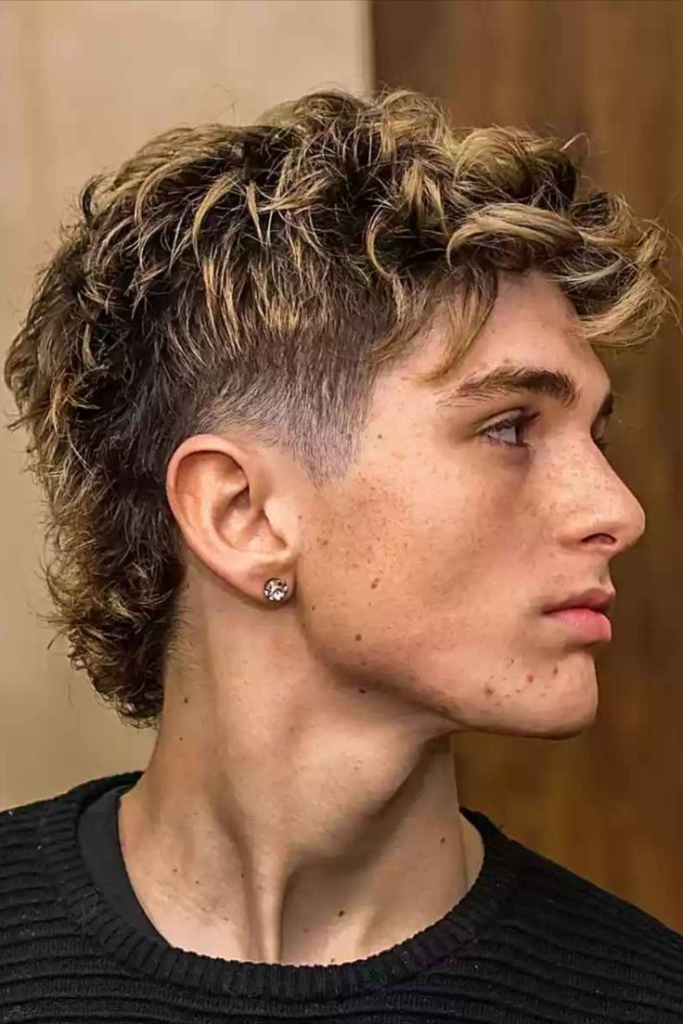
Image Source: https://fr.pinterest.com/latesthair/
The shaggy curly mullet blended natural texture with layered structure. Hair remained short at the front and sides but long in the back. Loose curls created volume and movement, giving the cut a unique shape. According to the Oxford English Dictionary, the mullet became one of the decade’s most popular hairstyles. Its curly variation displayed individuality while maintaining the known “business in the front, party in the back” profile.
Curly High Top
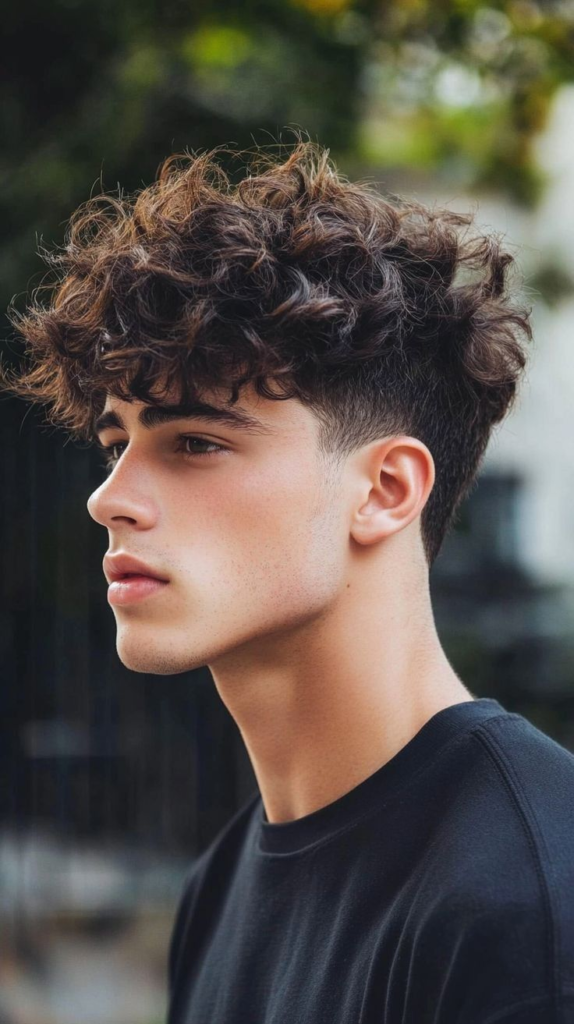
The curly high top combined flat-top geometry with tight, natural curls. Stylists shaped the crown into a squared form while reducing the sides. Hair height was essential; strong styling products are needed for support. Smithsonian Magazine notes the high-top became closely associated with late 1980s hip-hop culture. Its bold person shows skill, identity, and pride, making it more than just a hairstyle.
Side-Swept Long Waves
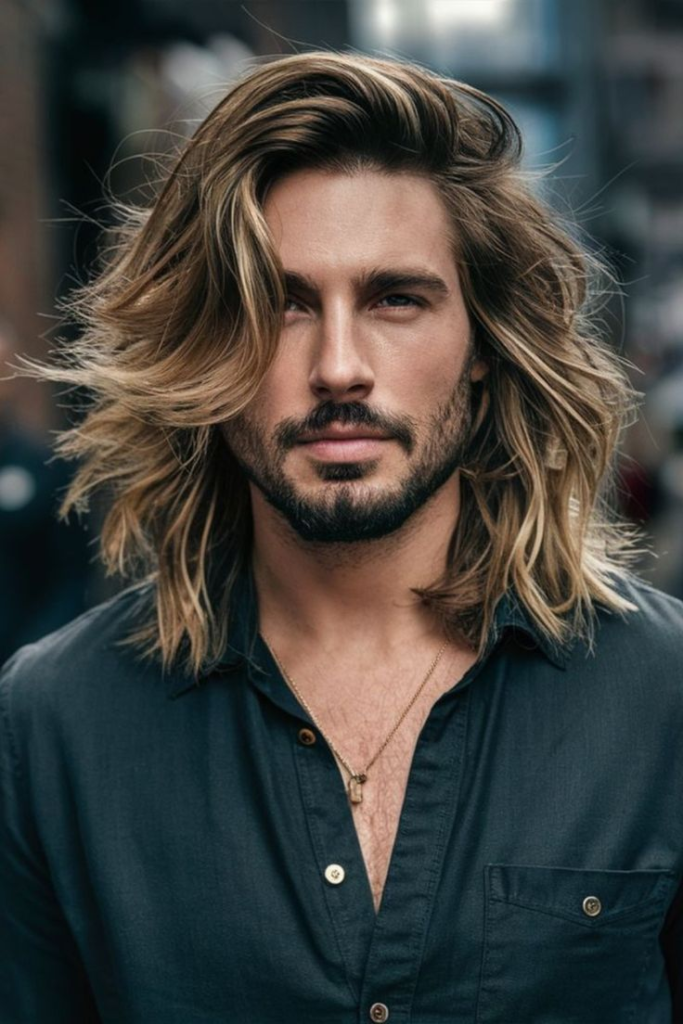
Image Source: mensdreamlifestyle.com
Side-swept long waves show a looser, refined approach to curly styles. Hair was grown below the shoulders and styled with a pronounced side part. The wave added softness and balance while maintaining natural movement. Fashion magazines of the era often featured this look in men’s editorial spreads. Britannica highlights that layered cuts enhanced wave definition, making this style adaptable for different curl types.
Tightly Defined Curls

Image Source: vagazine.com
Tightly defined curls highlighted control and polish in men’s curly hair, where stylists used gels or curl creams to shape individual strands of hair. The look minimized wrinkles while maximizing structure and shine. It contrasted with looser, more casual curly styles of the same decade. According to the Encyclopedia of Hair (Greenwood Press, 2005), defined curls reflected a growing interest in accurate styling during the 1980s.
Loose Afro

Image Source: pinterest.com/seyjuh
The loose afro remained an enduring symbol of cultural expression into the 1980s. Unlike the tightly shaped afro of the 1970s, this version was softer and more natural. Hair volume was maintained, but the shape seemed less stiff. The Smithsonian National Museum of African American History documents the afro as both a fashion and political statement. The looser form reflected changing trends while keeping its cultural significance.
Feathered Hair Trends for Men in the 1980s
Side-Swept Feathered Layers

Image Source: nexoye.com
Side-swept feathered layers gave men’s hairstyles a soft and flowing appearance. Stylists achieved this by layering hair and brushing it straight across the face. The look required blow-drying with a round brush to maintain vibrancy. According to Britannica, feathered hair became one of the most recognized styles of the late 20th century. Its popularity among both genders reinforced its status as a defining 1980s trend.
Center-Part Feathered Look

Image Source: relentlessgrooming.com
The center-part feathered style highlighted balance and symmetry in men’s grooming. Hair was parted down the middle, with layered strands fanning outward. Blow-drying and light sprays kept the texture soft but controlled. This hairstyle suited medium-length cuts and offered a polished yet casual look. Encyclopedia of Hair (Greenwood Press, 2005) notes that the feathered center part was widely adopted by actors and models of the decade.
Short Feathered Shag

The short feathered fringe adapted the feathered technique to cropped cuts. Stylists layered hair at the crown and sides, creating subtle lift and texture. This variation was low-maintenance compared to longer feathered styles. Its adaptability made it popular among younger men and athletes. Oxford Reference highlights that shag and feather hybrids reflected the ongoing blend of 1970s and 1980s trends.
Medium-Length Feathered Cut
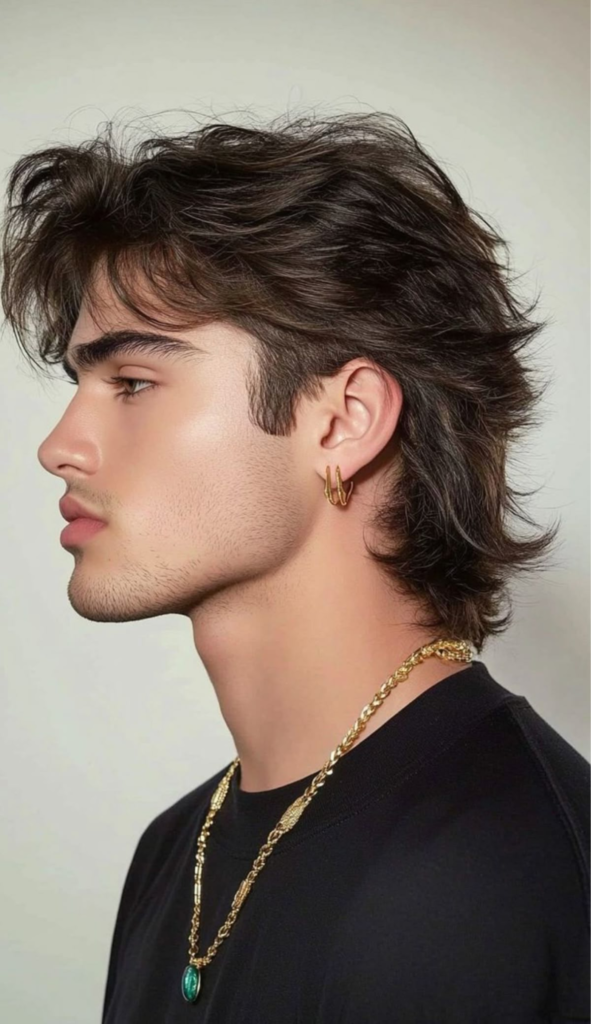
The medium-length feathered cut balanced versatility with volume. Hair typically fell to the ears or shoulders, layered for softness. Men often styled it with blow-dryers to create outward “wings.” According to Britannica, medium feathered cuts became a mainstream option across Western fashion. The look bridged casual style and professional grooming, fitting many social contexts of the decade.
Feathered Bangs
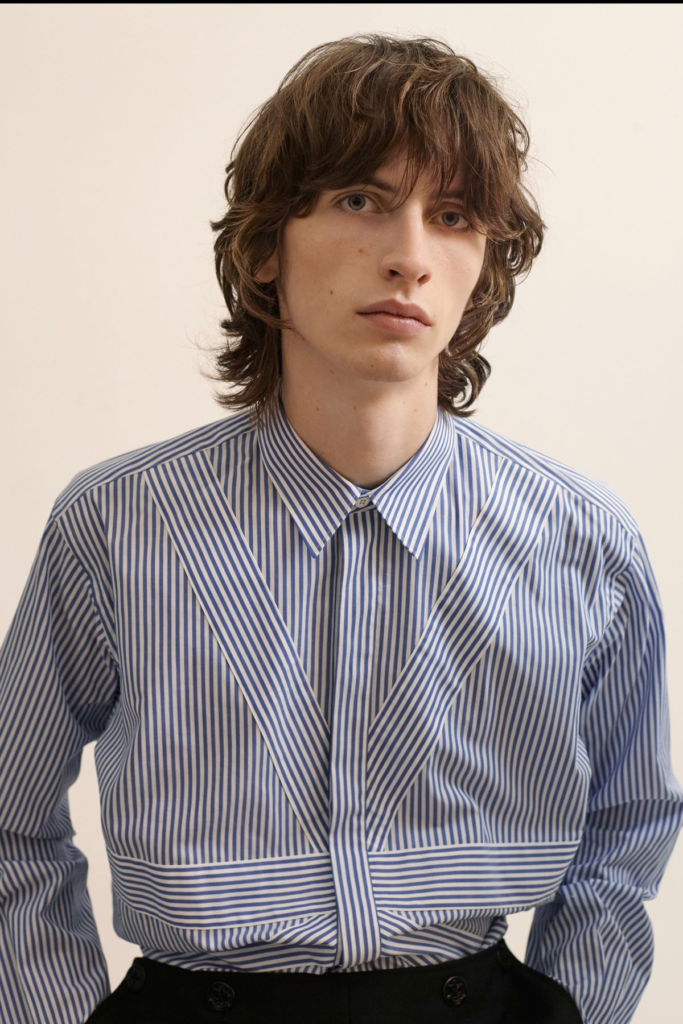
Feathered bangs offered a front-framing variation of the classic feathered look. Stylists cut bangs into layers and brushed them outward with volume. This style complemented both short and long feathered cuts. It was often combined with side or center parts for versatility. Fashion magazines of the 1980s frequently showcased feathered bangs as part of men’s editorial styling. Their soft framing effect reinforced the aesthetic of natural flow.
Facial Hair Trends in the 1980s for Men
Thick Mustache (Tom Selleck Style)

Image Source: wild-willies.com
The thick mustache became one of the most iconic facial hair styles of the decade. Popularized by actor Tom Selleck in Magnum, P.I., it projected confidence and masculinity. The mustache required regular grooming to maintain fullness without overgrowth. According to Smithsonian Magazine, the mustache symbolized rugged individualism in late 20th-century fashion. Its cultural impact was so strong that it remains associated with 1980s style.
Handlebar Mustache
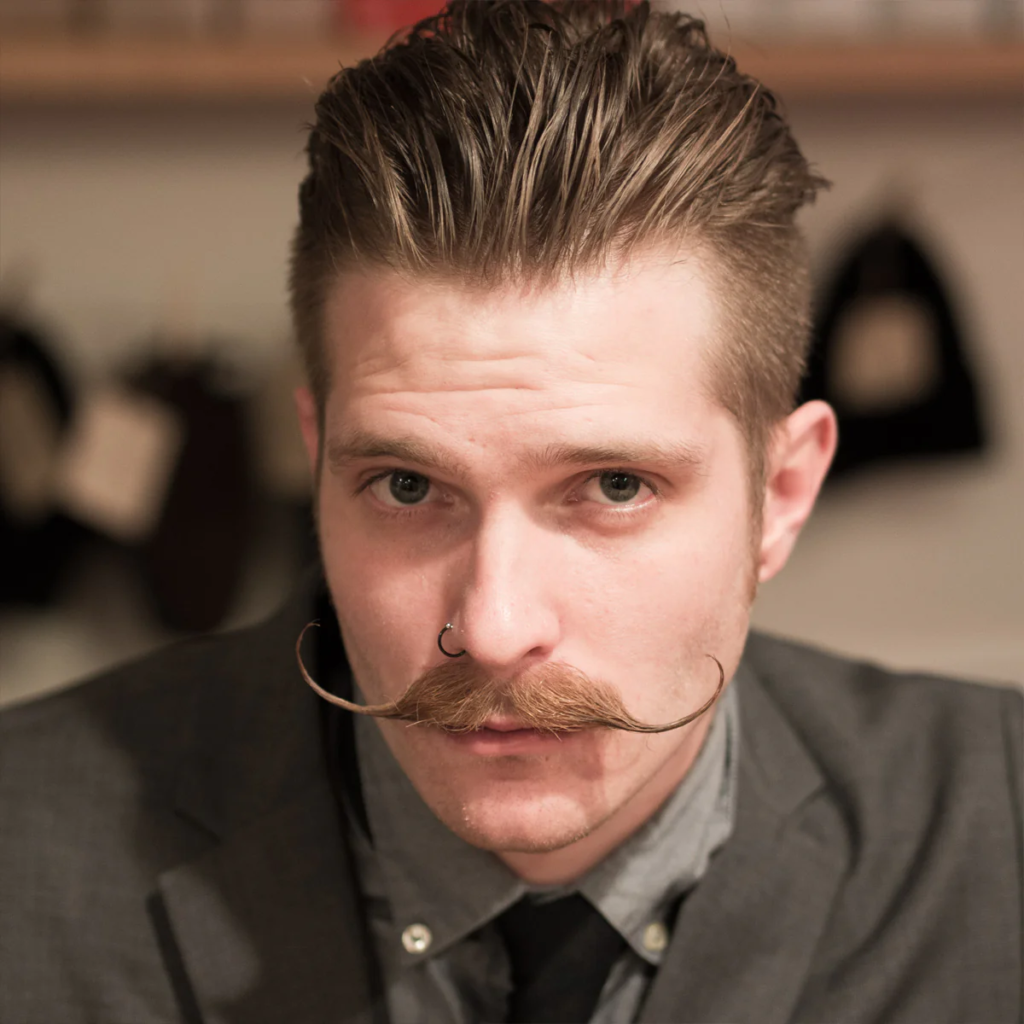
Image Source: beardbrand.com
The handlebar mustache offered a more stylized alternative to the thick mustache. Men shaped the ends with wax, curving them outward or upward. This style demanded precise grooming and daily maintenance. Its dramatic appearance is connected with subcultural fashion and alternative style movements. Britannica identifies the handlebar mustache as a recurring historical fashion, with renewed interest during the 1980s.
Light Stubble Look
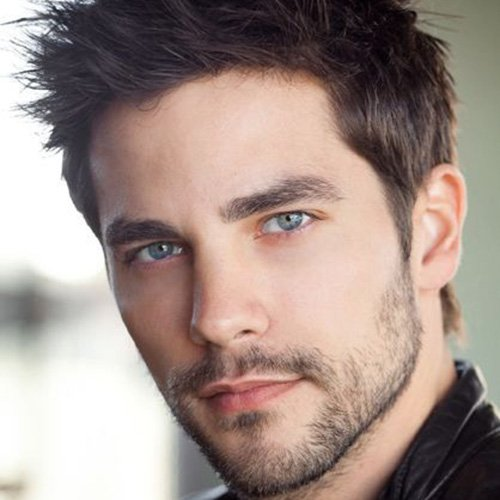
Image Source: wellgroomedgentleman.com
The light stubble style projected a casual, masculine aesthetic. Men achieved this look by trimming facial hair short rather than shaving daily. Electric trimmers made stubble easier to maintain throughout the decade. The style contrasted with clean-shaven corporate grooming standards. According to Encyclopedia of Hair (Greenwood Press, 2005), facial hair gained popularity through media images of robust masculinity in the 1980s.
Full Beard Revival

Image Sources: pinterest.com/topstyletrendss
Full beards returned in the 1980s after losing ground in the 1970s. Men often grew thick, natural beards, sometimes paired with long hairstyles. This look strengthened ideals of strength and maturity in male fashion. The beard also reflected the decade’s variety in grooming choices. The Smithsonian National Museum of American History records the beard’s ongoing cultural significance, noting its ongoing popularity in men’s style.
Goatee Variation

Image Source: brio4life.com
Goatees emerged as a more experimental facial hair trend during the decade. This style included hair only on the chin, sometimes with a mustache. Men favored it for its edgy, different appeal compared to mainstream mustaches. It required careful trimming to maintain sharp outlines. Oxford Reference confirms that the goatee, though older in origin, gained new importance during late 20th-century men’s fashion cycles.
Pop Culture Influences on 1980s Hairstyles
How Music Icons Shaped 1980s Hair Trends
Musicians significantly influenced hairstyles during the 1980s. Rock bands promoted long, teased hair with high volume. Artists like Madonna made lace bows and messy waves fashionable. Michael Jackson’s Jheri curl became iconic in both music and popular culture. According to Britannica, music television channels like MTV expanded the visual impact of musicians, spreading hairstyles globally.
TV and Film Stars Defining 1980s Hairstyles
Television and film shaped hair trends as strongly as music. Farrah Fawcett’s layered, feathered look remained influential into the early 1980s. Actors such as Tom Selleck popularized thick mustaches alongside full hairstyles. Molly Ringwald’s short and practical styles represented teenage fashion of the time. According to Smithsonian Magazine, film stars set mainstream trends that audiences copied widely.
Fashion Industry and Runway Influence
The fashion industry used hairstyles to complement bold clothing designs. Runway models frequently wore elevated volume, imbalance, or experimental cuts. Designers collaborated with stylists to align hair with dramatic fashion themes. According to Vogue Archives, crimped and neon-colored hair appeared in major fashion shows. The runway became a testing ground before these styles reached wider audiences.
Cultural and Social Meaning of 1980s Hair
Hair as Rebellion in the 1980s
Many hairstyles represented rebellion against mainstream norms. Punk styles, such as mohawks and spiked hair, symbolized resistance to authority. Neon hair colors and irregular cuts further reinforced rebellious identity. According to Britannica, punk fashion and hair served as a protest against consumer culture.
Hairstyles Reflecting Gender Roles
Hairstyles also reflected evolving gender roles in the 1980s. Women’s voluminous and powerful hairstyles aligned with workplace empowerment. Men’s mullets and feathered cuts blurred traditional masculine boundaries. Smithsonian Magazine notes that hair often mirrored shifts in gender identity during the decade.
Global Spread of 1980s Hair Fashion
1980s hairstyles spread globally through music, television, and film. MTV and Hollywood cinema exported these looks to international audiences. Japanese and European youth adopted crimped styles, perms, and mullets. According to Oxford Reference, globalization of popular culture increased fashion adoption, including hair trends.
Modern Revival of 1980s Hairstyles
How 1980s Hairstyles Resurface in Today’s Fashion
Several 1980s hairstyles have reappeared in modern fashion cycles. Crimped hair, mullets, and perms have returned with updated styling techniques. Vogue confirms that retro-inspired hairstyles frequently resurface in modern runway shows.
Celebrities Reviving 1980s Hair in Pop Culture
Celebrities play a major role in reintroducing 1980s hair. Singers like Miley Cyrus and The Weeknd have embraced modern mullet variations. According to Harper’s Bazaar, celebrity styling choices help re-establish retro hair as relevant in pop culture.
1980s-Inspired Looks on Runways and Social Media
Runways frequently remake 1980s hair with exaggerated proportions and textures. Social media platforms like Instagram and TikTok spread these revivals globally. Vogue Business reports that nostalgic styling resonates with younger audiences who want retro aesthetics.
Conclusion
Hairstyles in the 1980s emphasized volume, variation, and cultural symbolism. Crimping, perms, mullets, and feathered cuts symbolized the era’s bold aesthetic.
The decade’s hairstyles remain influential because of their flexibility and cultural significance. According to the Smithsonian National Museum of American History, hair continues to reflect identity, politics, and social values, just as it did in the 1980s.
FAQs: 1980s Hair Fashion
What was the most popular men’s hairstyle in the 1980s?
The mullet became one of the most popular men’s hairstyles (Britannica).
What was the most popular women’s hairstyle in the 1980s?
Voluminous permed styles defined women’s hair trends (Vogue Archives).
How did music influence 1980s hairstyles?
Music icons shaped hair through visual performances on MTV (Britannica).
Did hairstyles differ across regions in the 1980s?
Yes. Western styles influenced Asia and Europe, but local adaptations appeared (Oxford Reference).
Why is 1980s hair fashion still popular today?
It resurfaces because of memories and its flexibility (Vogue Business).

